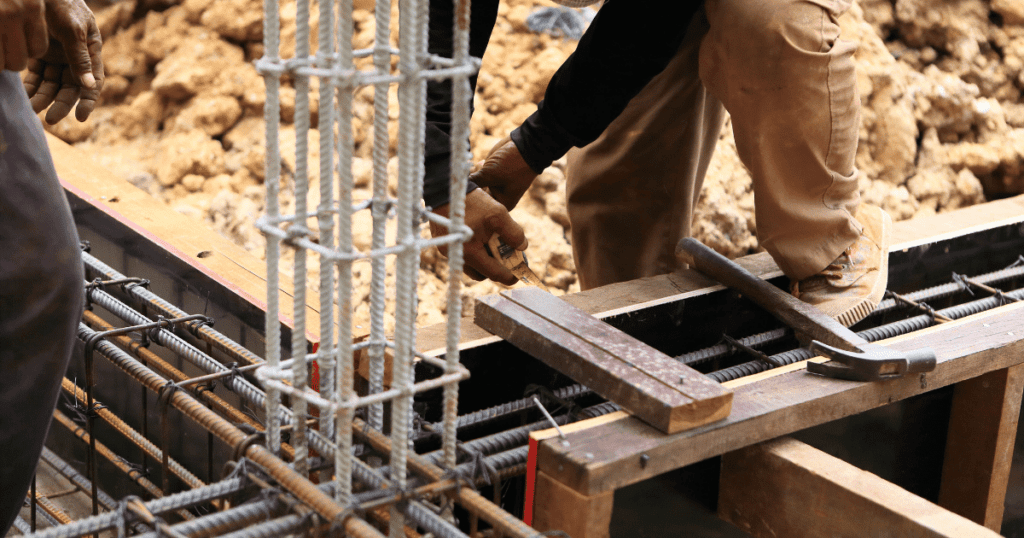In any construction project, the foundation serves as the critical support system that bears the weight of the entire structure. It is designed to distribute the load of the building evenly to the ground, ensuring stability and preventing settlement or collapse. The choice of materials used in building foundations is essential for long-term durability and safety.

Understanding the various foundation building materials and their properties can help builders make informed decisions that align with the specific needs of each project.
Concrete: The Backbone of Foundation Building Materials
Concrete is one of the most widely used materials in foundation construction, and for good reason. It is a composite material composed of cement, water, and aggregates such as sand, gravel, or crushed stone. When mixed together, these components form a strong, durable material that can withstand substantial loads and environmental conditions. Concrete is particularly valued for its compressive strength, making it ideal for supporting the heavy loads of a building.
There are different types of concrete used in foundation building materials, each with unique properties tailored to specific applications:
- Reinforced Concrete: This type of concrete includes steel reinforcement bars (rebar) embedded within it. The steel provides tensile strength, which is necessary for resisting forces such as bending or stretching. Reinforced concrete is commonly used in foundations that require additional support against tension and shear forces.
- Precast Concrete: Precast concrete is produced in a controlled environment and then transported to the construction site for installation. This method allows for consistent quality and reduces the time required for on-site construction. Precast concrete is often used for foundation components like beams, slabs, and walls.
- Poured Concrete: Poured or cast-in-place concrete is mixed on-site and poured into forms to create the foundation. This method allows for flexibility in design and is commonly used for slab foundations, footings, and retaining walls.
Masonry: A Traditional Approach to Foundations
Masonry is another popular material used in foundation construction, particularly in regions where stone, brick, or concrete blocks are readily available. Masonry foundations are known for their durability and resistance to fire and pests. They are often used in the construction of basements, crawl spaces, and retaining walls.
- Concrete Blocks: Concrete masonry units (CMUs) or concrete blocks are a common choice for foundation walls. They are manufactured in various sizes and shapes and can be reinforced with steel or filled with concrete to enhance their strength. Concrete block foundations are known for their load-bearing capacity and resistance to moisture.
- Brick: Brick foundations have been used for centuries and are still prevalent in some regions. Bricks are made from clay or shale and are fired in a kiln to achieve hardness. While brick foundations offer excellent durability and aesthetic appeal, they require skilled labor for proper installation and may need additional waterproofing measures.
- Stone: Stone foundations are one of the oldest types of foundations and are still used in specific applications. Stones such as granite, limestone, and sandstone are laid in a mortar bed to create a solid foundation. Stone foundations are highly durable and resistant to environmental elements but can be labor-intensive and costly to construct.
Steel: Strengthening Foundation Building Materials
Steel is often used in conjunction with other materials to provide additional strength and support to foundation structures. While not typically used as the primary material for foundations, steel plays a crucial role in reinforcing concrete and masonry foundations.
- Steel Reinforcement Bars (Rebar): Rebar is commonly used to reinforce concrete foundations, providing the necessary tensile strength to complement concrete’s compressive strength. Rebar is available in various grades and sizes, allowing it to be tailored to the specific needs of the project. It is particularly important in foundations that are subject to bending, stretching, or shear forces.
- Steel Piles: In situations where the soil conditions are poor or the building load is exceptionally heavy, steel piles may be used to provide additional support. Steel piles are driven deep into the ground to reach stable soil or bedrock, transferring the building’s load to a more stable layer. This method is often used in commercial or industrial construction where the foundation must bear significant weight.
Wood: A Versatile Foundation Material
While less common in modern construction, wood has historically been used as a foundation material, especially in regions where timber is abundant. Wood foundations are typically constructed using pressure-treated lumber to resist decay and insect damage. They are most commonly found in low-rise residential buildings or cabins.
- Pressure-Treated Lumber: Pressure-treated wood is infused with chemical preservatives to protect it from moisture, insects, and decay. This makes it suitable for use in foundations where it will be in contact with the ground. Wood foundations are lightweight and easy to install, making them a cost-effective option for certain types of construction.
- Wood Piles: Similar to steel piles, wood piles are driven into the ground to support the structure’s load. Wood piles are typically used in areas with soft or unstable soil where traditional foundations would not provide adequate support.
Choosing the Right Foundation Building Materials
The choice of foundation building materials depends on various factors, including the type of soil, climate, building load, and budget. Each material has its strengths and weaknesses, and understanding these can help builders select the best option for their specific project. Concrete, masonry, steel, and wood all have their place in foundation construction, and their proper application ensures the longevity and safety of the structure being built.


